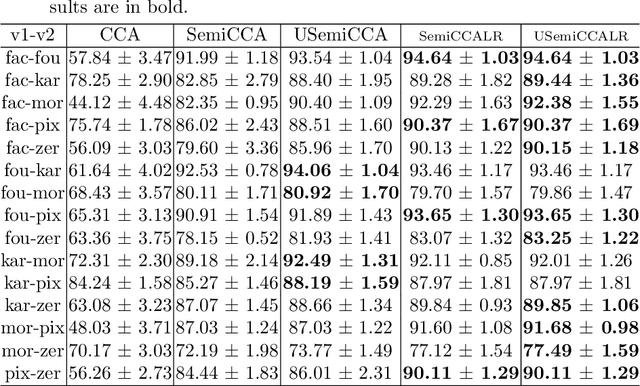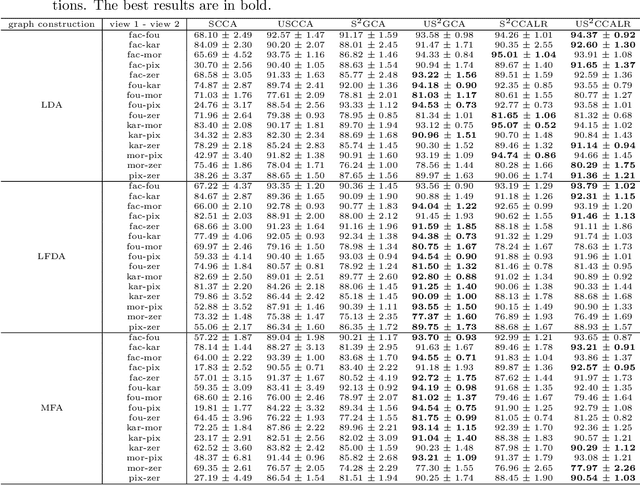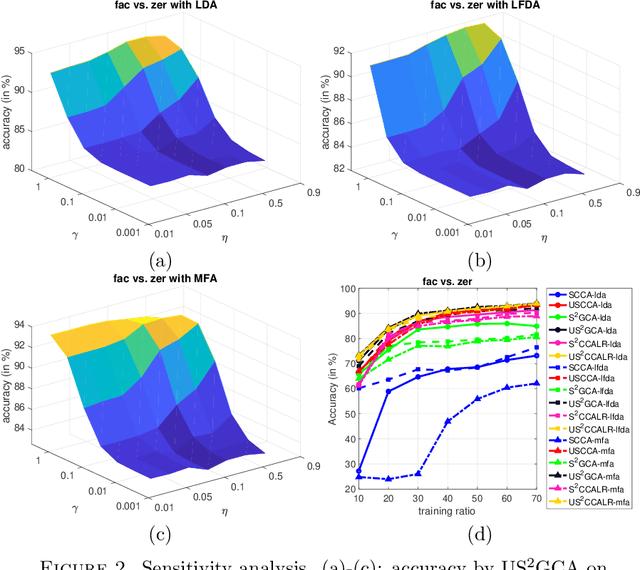Lei-Hong Zhang
Trace Ratio Optimization with an Application to Multi-view Learning
Jan 12, 2021



Abstract:A trace ratio optimization problem over the Stiefel manifold is investigated from the perspectives of both theory and numerical computations. At least three special cases of the problem have arisen from Fisher linear discriminant analysis, canonical correlation analysis, and unbalanced Procrustes problem, respectively. Necessary conditions in the form of nonlinear eigenvalue problem with eigenvector dependency are established and a numerical method based on the self-consistent field (SCF) iteration is designed and proved to be always convergent. As an application to multi-view subspace learning, a new framework and its instantiated concrete models are proposed and demonstrated on real world data sets. Numerical results show that the efficiency of the proposed numerical methods and effectiveness of the new multi-view subspace learning models.
Uncorrelated Semi-paired Subspace Learning
Nov 22, 2020



Abstract:Multi-view datasets are increasingly collected in many real-world applications, and we have seen better learning performance by existing multi-view learning methods than by conventional single-view learning methods applied to each view individually. But, most of these multi-view learning methods are built on the assumption that at each instance no view is missing and all data points from all views must be perfectly paired. Hence they cannot handle unpaired data but ignore them completely from their learning process. However, unpaired data can be more abundant in reality than paired ones and simply ignoring all unpaired data incur tremendous waste in resources. In this paper, we focus on learning uncorrelated features by semi-paired subspace learning, motivated by many existing works that show great successes of learning uncorrelated features. Specifically, we propose a generalized uncorrelated multi-view subspace learning framework, which can naturally integrate many proven learning criteria on the semi-paired data. To showcase the flexibility of the framework, we instantiate five new semi-paired models for both unsupervised and semi-supervised learning. We also design a successive alternating approximation (SAA) method to solve the resulting optimization problem and the method can be combined with the powerful Krylov subspace projection technique if needed. Extensive experimental results on multi-view feature extraction and multi-modality classification show that our proposed models perform competitively to or better than the baselines.
 Add to Chrome
Add to Chrome Add to Firefox
Add to Firefox Add to Edge
Add to Edge